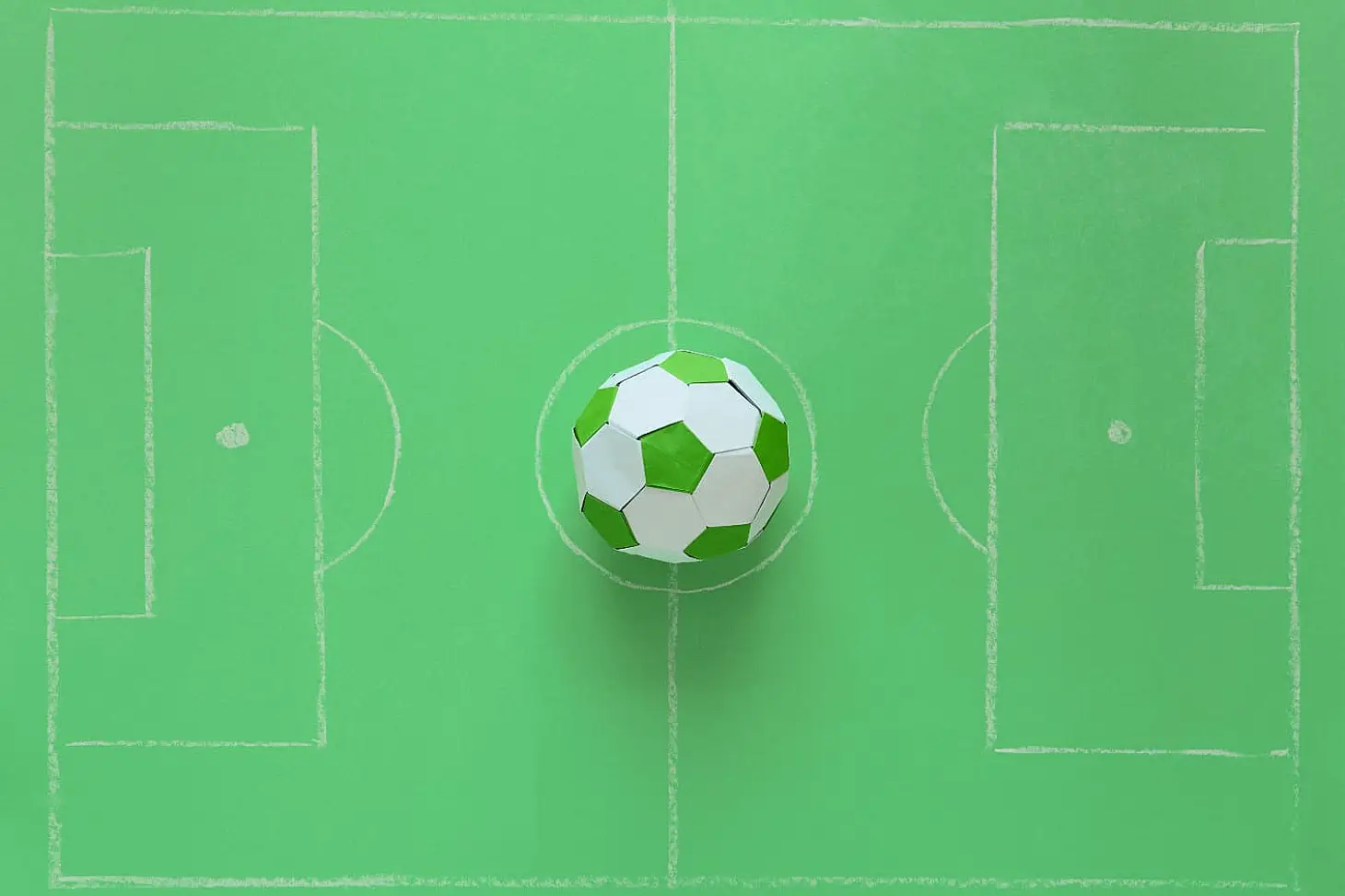Football Field Markings: A Guide to the Lines and Zones on the Pitch
Compared to other ball sports, football has a wide variety of field markings, each serving a specific purpose in regulating gameplay. The different lines, usually drawn with chalk or a mixture of paint and water, are essential for defining game areas where specific actions are permitted or restricted.
According to official rules, no line on a football pitch may be wider than 12 centimeters. There is no minimum width requirement, but lines are typically 5 to 6 centimeters wide to ensure good visibility. The following guide explains the various lines and markings that help shape the game and determine where the ball finds the back of the net.
Differences Between National and International Football Pitch Sizes
For both national and international matches, every line on the field is part of the area it marks.
National Pitch Regulations
- Sidelines (length): Between 90 and 120 meters
- Goal lines (width): Between 45 and 90 meters
- The sideline must always be longer than the goal line, as per DFB (German Football Association) regulations
International Pitch Regulations
- Length: Between 100 and 110 meters
- Width: Between 64 and 75 meters
- The most common standard size is 68 x 105 meters (7,140 square meters total)
Midline and Kick-Off Circle
- The midline marks the exact longitudinal center of the pitch
- The kick-off spot is placed in the middle of the field
- A 9.15-meter radius surrounds the kick-off point, forming the center circle
The Penalty Spot
A penalty kick, commonly known as a "penalty", is taken from the penalty spot.
- The distance from the penalty spot to the goal line is 12 yards (10.97 meters), originating from football's British roots
- On average, 75–80% of penalty kicks result in a goal
- A small marking is placed 5.50 meters from the penalty spot, indicating the distance for defensive players during penalties
The Penalty Area and Goal Area
The Penalty Area ("16-Yard Box")
The penalty area, also called the "16-yard box," includes:
✔ The goal area
✔ The penalty spot
- Dimensions: 16.50 meters long and 40.32 meters wide
- Total area: 665.28 square meters
- The outermost edge of the penalty area is defined by its boundary lines
The Goal Area ("6-Yard Box")
- The goal area extends 5.50 meters from the goal line into the penalty box
- Width: 18.32 meters
- Total area: 110.76 square meters
Interestingly, the penalty area was originally circular before its rectangular shape was standardized in 1896.
The D-Shaped Arc Outside the Penalty Area
- This arc is not part of the penalty area
- It has a 9.15-meter radius from the penalty spot
- Used to ensure defensive players remain outside the required distance during penalties
Goal Dimensions and Markings
Like the field markings, goals must meet specific size standards to ensure fair gameplay:
✔ Goal height: 2.44 meters
✔ Goal width (between the inner sides of the posts): 7.32 meters
✔ Allowed post shapes: Round, oval, square, or rectangular
✔ Post width/diameter: Between 10 and 12 centimeters
A goal net is attached to the frame and extends 1.50 meters beyond the pitch to prevent balls from rebounding.
Corner Area and Corner Flags
Corners play a crucial role in football. Each field corner features:
✔ A highly visible flag, often yellow, mounted on a flexible pole at least 1.50 meters high
✔ A quarter-circle marking with an area of 0.78 square meters
During corner kicks, the ball must be placed inside the quarter-circle marking before being played into the field.
In addition to the corner flags, additional flags may be placed at the halfway line to indicate midfield.
In snowy conditions, extra flags may be placed along the goal area and penalty area lines to improve visibility.
Conclusion
Football field markings are not just lines; they define the rules, strategies, and structure of the game. From the penalty area to the goal dimensions and corner flags, each marking serves a critical purpose in ensuring a fair and organized match. Understanding these markings helps players, coaches, and fans better appreciate the intricacies of the sport and its regulations.






